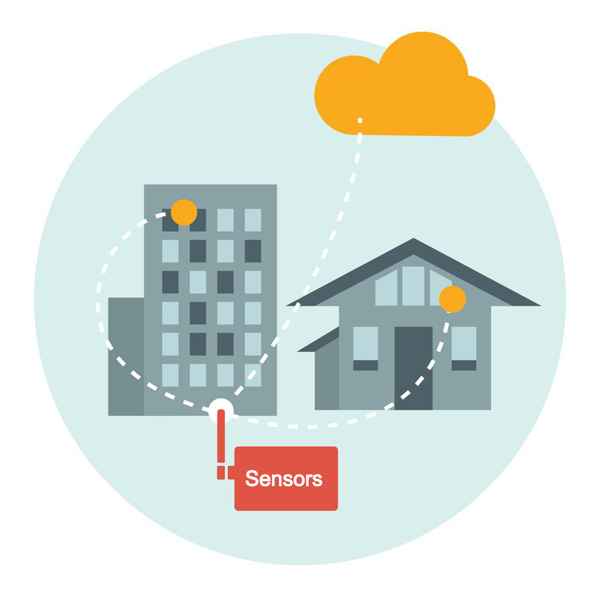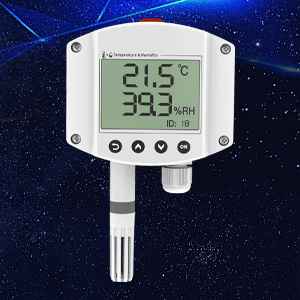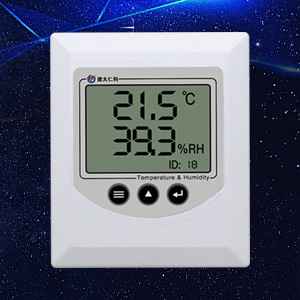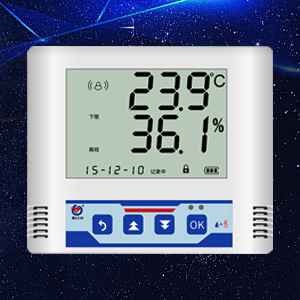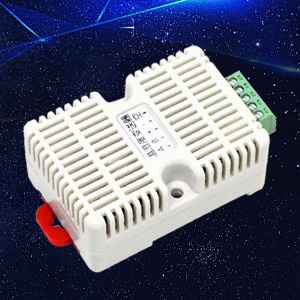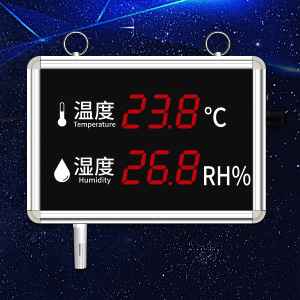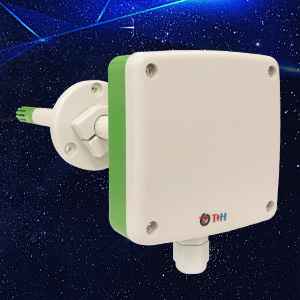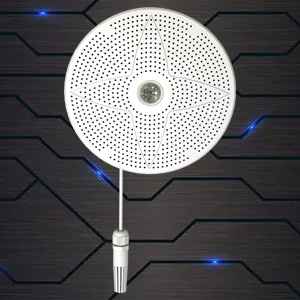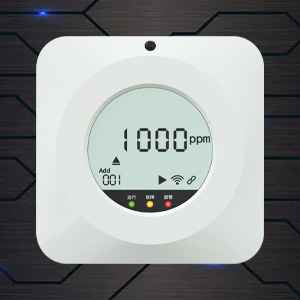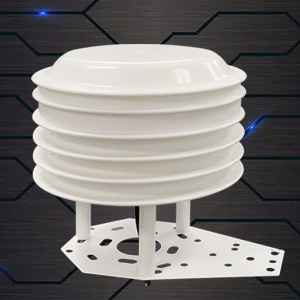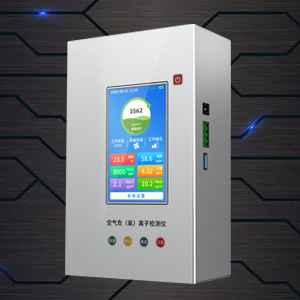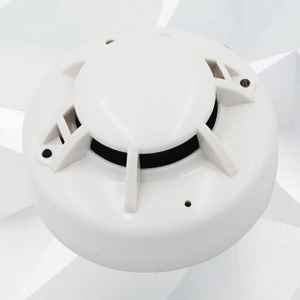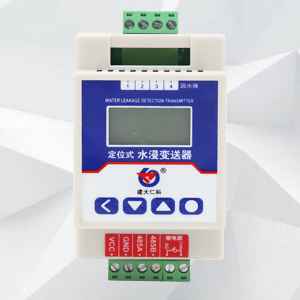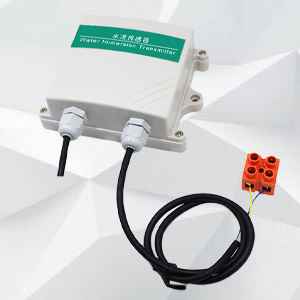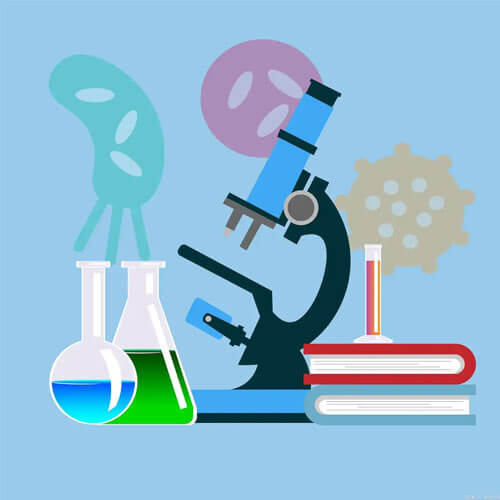Table of Contents
Smart buildings are the product of the development of modern science. The smart building system is mainly composed of Internet of Things technology, modern computer technology, and smart building sensors. Smart building refers to the optimal combination of the structure, system, service and management of the building according to the needs of users, so as to provide users with an efficient and comfortable humanized building environment.
For example, workers enter their work area based on their identification, the system adjusts indoor lighting based on the amount of sunlight that flows in, and adjusts temperature and humidity based on weather conditions. Security personnel remotely monitor the safety of key areas, check the status of power loads and water valves in real-time, and avoid fires or water leakage. The realization of all the above schemes relies on smart building sensors and Internet of Things technology.
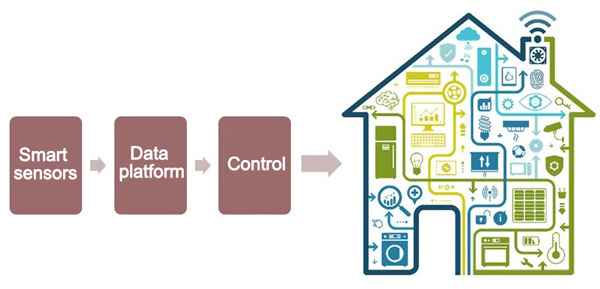
What are smart building sensors?
Smart building sensors are capable of collecting environmental and operational data of buildings and reacting to the collected information in real time. They are the front end of smart building systems. To improve the comfort of residents, maintenance operations are also very convenient. This artificial intelligence system is more advanced than ordinary manual management. It allows data to be communicated within the building and facilitates communication with external applications.
What are types of smart building sensors?
The sensor is the front end of the smart building system, and it directly contacts the measured object. Its function is to feel the change of the measured parameter and send out a signal suitable for it. There are many types of smart building sensors. Here are some of the most important smart building sensors.
Temperature sensors
The temperature sensors measure the temperature in the environment. For different installation places, the appearance and measurement principle of the temperature sensor is also different. The most common is to install an HVAC to control the temperature and adjust the indoor climate according to environmental changes. Install near the computer or in the cabinet to monitor the temperature to prevent overheating caused by the load. Sensors used for cold chain temperature monitoring (such as food safety, pharmaceuticals), these temperature recorders may have very specific measurement and data logging functions.
A suitable temperature can effectively improve people’s enthusiasm for work and is also conducive to physical health. Controlling a reasonable temperature range in shopping malls or supermarkets can greatly improve consumer comfort.
Temperature and humidity sensor list
Humidity sensors
Humidity sensors are used to measure the relative humidity in the air and are usually used in combination with temperature sensors. Most machinery and equipment cannot tolerate humid environments, and moisture in the air can easily cause the metal to rust. The humidity sensor can be used to monitor and control the HVAC system to ensure that the humidity of the equipment is maintained at a safe level.
When the air humidity is too high or too low, it is conducive to the reproduction and spread of some bacteria and viruses. Science shows that when the air humidity is higher than 65% or lower than 38%, the germs multiply and breed fastest, and when the relative humidity is 45%-55%, the germs die faster. Humidity sensors play an important role in creating climate and tenant comfort.
Motion sensors (occupancy sensors)
Motion sensors usually use infrared rays to receive the physical movements of people or animals in a specific area, and convert the information into electrical signals. This kind of sensor can be used in the construction industry to monitor whether there are intruders. It can also be used to automatically perform building controls, such as automatic doors, automatic lighting, toilet flushers, and hand dryers. When monitoring the availability of personnel, ceiling installation is often used to cover a larger area. Once the emitted infrared rays are blocked, the sensor will promptly alarm and remind the staff.
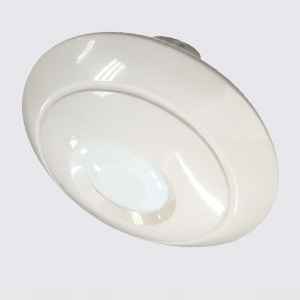
Motion and occupancy sensors have multiple uses in the smart building environment. Companies can know whether the room is safe by installing motion sensors. By detecting the presence of people or objects in real time, occupancy sensors enable organizations to understand which rooms are being used.
Air quality sensors (gas detector)
The indoor air quality sensor uses the IoT and computer technology to configure the air quality sensor to collect indoor air temperature and humidity, illuminance, particulate matter (PM2.5/PM10), carbon dioxide, TVOC, formaldehyde, noise, and other environmental factors, collect in real-time. The data is transmitted to the remote monitoring platform and government environmental protection platform, so that managers and environmental protection supervisors can view the current indoor air conditions through the platform interface. Air quality sensors are often used to monitor the concentration of pollutants in the air, It is an important part of air purifiers and fresh air systems. They are used to monitor air quality, detect toxic or combustible gases, and monitor harmful gases in the manufacturing, pharmaceutical, petrochemical, and mining industries.
Air quality sensor list
Modern office buildings are tightly closed and poorly ventilated. They cannot open windows for ventilation, and they have been closed for many years. Poor ventilation in a confined space leads to high carbon dioxide concentration and insufficient oxygen content, resulting in dull air. In such an environment, people are prone to sleepiness, dizziness, and difficulty breathing, and their thinking ability is significantly reduced.
Smoke sensors
The smoke detector monitors the concentration of smoke to prevent fires. The intensity of scattered light is proportional to the concentration of smoke. The intensity of the infrared beam received by the photosensitive tube is converted into an electrical signal, and finally into an alarm signal. The smoke detector is directly connected to the fire alarm host. When the alarm host occurs, it will prompt and activate the relevant fire fighting equipment according to the linkage program, so as to make early warning and linkage treatment of the fire scene in time, so as to achieve the effect of timely detection and treatment.
Water leak sensors
If water leakage cannot be monitored in real time in the building, only regular inspections by personnel will often cause major losses. The air-conditioning system, HVAC system, and water supply system have complicated pipes, and there are too many blind spots in manual monitoring. The water leak sensor is an easy-to-operate liquid leak detection device. It can give an alarm as soon as it detects a water leak. Many indoor high-end electrical equipment is not waterproof, and once they are soaked in stagnant water, they can cause irreparable damage. It is necessary to use a water leak sensor to monitor whether there is standing water near the equipment in real time.
Smoke and water leak sensor list
Light sensors
The light sensor measures the amount of lighting in a certain area and is usually integrated with a motion sensor. When it detects presence, it triggers the lighting of the room or area. The illuminance sensor can monitor and automatically adjust the lighting level when the sun is down, cloudy, or shadowed. Having the right level of lighting in the work environment can reduce fatigue and ensure physical comfort.
In order to improve the comfort of the working environment, the lighting control system adopts light sensors to automatically control the lighting equipment according to the illuminance of the current environment, so that the illuminance is controlled within a comfortable range. In traditional lighting control systems, common light sensors combined with A/D converters (ADC) are often used. Since the light signal detected by the light sensor contains both visible light and infrared light components, the detection result of the infrared light on the light sensor is filtered out.
Contact sensors
Contact sensors are often used in smart buildings to detect whether doors and windows are open or closed, and can view the real-time status of doors and windows around the building, including cabinets, cabinets, and doors on refrigerators. Contact sensor data can be used for security and accountability, and provide insight into office traffic, frequency of use of certain rooms, or how the office climate is affected by door placement or window ventilation.
The contact sensor is usually divided into two parts, one is installed on the door or window, and the other is installed on the frame. The magnetic field is used to detect contact (meaning that the door or window is closed) and separation (when the door or window is open).
Other smart building sensors
Proximity sensors uses the sensitive characteristic of the displacement sensor to recognize the proximity of the object and outputs the corresponding switch signal. Therefore, the proximity sensor is usually called a proximity switch. It is used in automatic doors and automatic hot air blowers in hotels, restaurants, and garages. In terms of security and anti-theft, anti-theft devices composed of various proximity switches are usually installed.
Pressure sensors are often used in safety control systems, and the main target area is the safety management system of the air compressor itself.
Water quality sensors are used in environmental management to measure chemical substances, ions, organic elements, suspended solids and pH in water.
Power-off sensor is connected to the monitored power line power supply. When the power is off (power failure), the built-in mobile phone card of the power failure alarm is used to send text messages and dial to the duty officer. After receiving the call and text message, the policeman can determine where the power is off. (Power failure), to achieve the purpose of immediately notifying the relevant personnel when the power supply of the equipment fails, so as to deal with it in time.
Accelerometer sensor is suitable for remote sensing applications in “severe shaking” conditions such as earthquakes. It is widely used in seismic and vibration sensing under the conditions of ultra-low noise measurement and low cost. Very suitable for building monitoring, industrial and process control and structural monitoring.
Gyroscope sensor is a control system based on free space movement and gesture positioning. The gyroscope sensor can also integrate radar sensing measurement function, as long as someone enters the room and moves, it will be measured by the radar. The false alarm rate is low, which is very suitable for anti-theft alarms on important occasions.
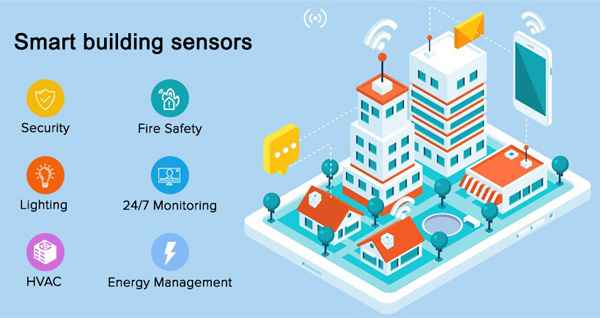
What are the benefits of smart building sensors?
Smart building sensors can collect and analyze real-time data, and make optimal solutions to problems. It is of great significance to modern architecture:
- Can save building energy
- Improve the sustainability of building use
- Real-time monitoring reduces maintenance costs
- Optimize space utilization
- Enhance the safety, comfort and safety of tenants
Smart building sensors with IoT technology
The current Internet of Things (IoT) technology is gradually playing a role in the intelligent building environment system and will provide higher value. The application of IoT sensors in commercial buildings, schools, libraries, shopping malls and other fields can realize low-cost but efficient monitoring and control. Sensors deployed in key locations can monitor the building environment in real time, collect information for intelligent decision-making, and provide convenience for various services. A mature IoT monitoring platform, which provides a unified monitoring terminal that can integrate different types of sensor information in different areas. At the same time, this software platform also supports customers to carry out secondary development according to their own needs. It can monitor and control the main electrical loads in commercial buildings (such as HVAC, lighting and power outages), as well as solar photovoltaic systems, energy storage units and other Internet of Things sensors.

